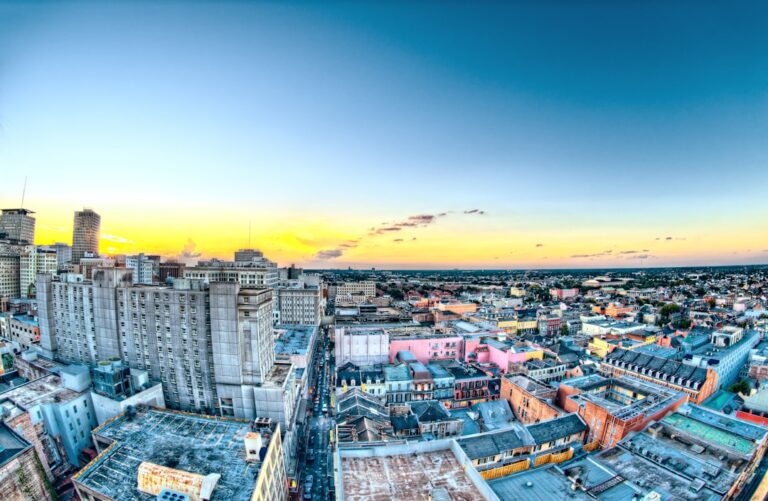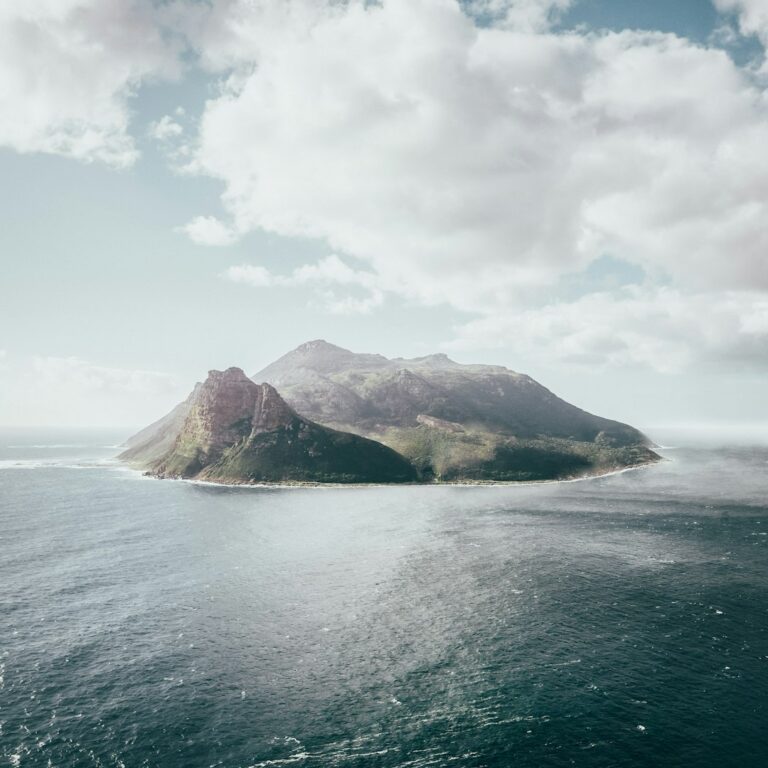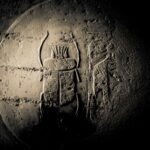Support our educational content for free when you purchase through links on our site. Learn more
🐒 Unlocking the Secrets of the Lost City of the Monkey God (2025)
Imagine hacking through dense Honduran jungle, sweat dripping, heart pounding, when suddenly you stumble upon an ancient stone altar carved with mysterious monkey and jaguar motifs. This isn’t just the stuff of Indiana Jones movies — it’s the real-life thrill of discovering the Lost City of the Monkey God, a legendary Pre-Columbian metropolis hidden for centuries beneath the rainforest canopy. At History Hidden™, we’ve pieced together the fascinating story of this elusive city, from its mythic origins and groundbreaking LiDAR discovery to the breathtaking artifacts and the jungle’s deadly “curse.”
In this comprehensive guide, you’ll uncover how modern technology cracked open a centuries-old mystery, the cultural riches unearthed, and the ongoing debates about preservation and exploration. Plus, we share insider tales from explorers who dared to venture into one of the world’s most remote rainforests — and what it really takes to survive the jungle’s embrace. Curious about the monkey god’s true identity or the jungle diseases that plagued the expedition? Stick around — the answers might surprise you!
Key Takeaways
- The Lost City of the Monkey God is a real archaeological site in Honduras, revealed using cutting-edge LiDAR technology in 2012.
- The city features ceremonial plazas, pyramids, and unique artifacts like jaguar and monkey god carvings dating back to A.D. 1000–1400.
- Expeditions face serious challenges including leishmaniasis, venomous wildlife, and dense jungle terrain.
- Preservation efforts are critical to protect the site from looting, deforestation, and climate change.
- The story blends legend, science, and adventure, inspiring books, documentaries, and even music.
Ready to dive deeper or bring the story home? Check out Douglas Preston’s bestselling book The Lost City of the Monkey God on Amazon or explore National Geographic’s special edition magazine for stunning visuals and expert insights.
Unlock the jungle’s secrets with us — your ultimate guide to the Lost City awaits!
Table of Contents
- ⚡️ Quick Tips and Facts: Unearthing the Lost City of the Monkey God
- 📜 The Whispers of the Past: Unraveling the Legend of Ciudad Blanca
- 🛰️ The Dawn of Discovery: How Modern Tech Found the Lost City
- 🗿 Treasures Unearthed: What the Lost City of the Monkey God Revealed
- 👤 The Ancient Inhabitants: Who Were the People of the White City?
- 🐍 The Jungle’s Embrace: Dangers and Diseases of the Lost City
- 🌍 Preserving the Past: Conservation Efforts for the Lost City
- 🕵️♂️ The Modern-Day Indiana Jones: Key Explorers and Their Journeys
- 🤔 Debates and Future Horizons: What’s Next for Ciudad Blanca?
- Conclusion: The Enduring Allure of the Lost City
- Recommended Links
- FAQ: Your Questions About the Lost City Answered
- Reference Links
⚡️ Quick Tips and Facts: Unearthing the Lost City of the Monkey God
Welcome to the thrilling world of the Lost City of the Monkey God, also known as Ciudad Blanca or the White City! At History Hidden™, we’ve delved deep into this enigmatic legend that has fascinated explorers, archaeologists, and adventurers for centuries. Here’s a quick cheat sheet before we plunge into the jungle of facts and myths:
| Fact / Tip | Detail |
|---|---|
| Location | La Mosquitia region, eastern Honduras, within the Río Plátano Biosphere Reserve |
| Discovery Method | Advanced LiDAR technology scanning dense rainforest canopy |
| Historical Significance | Pre-Columbian archaeological site with plazas, pyramids, and artifacts dating 1000-1400 AD |
| Key Expedition | 2012 multidisciplinary expedition led by Steve Elkins and National Geographic |
| Notable Artifacts | Stone vessels, metates (ceremonial seats), jaguar and monkey god iconography |
| Health Risks | Leishmaniasis contracted by several expedition members |
| Current Threats | Looting, deforestation, climate change |
| Cultural Impact | Inspired books, documentaries, music albums (e.g., The Sorcerers’ soundtrack) |
| Mystery Element | Exact location remains secret to protect the site |
If you’re itching to know how a million-dollar lidar scanner helped uncover a city lost beneath centuries of jungle growth, or what it’s like to trek through one of the most remote rainforests on Earth, keep reading! And if you want a cinematic experience, check out the featured video for a deep dive narrated by History Time.
For more spine-tingling tales of lost civilizations, don’t miss our article on 10 Shocking Secrets of the Cursed Tomb of Genghis Khan ⚔️.
📜 The Whispers of the Past: Unraveling the Legend of Ciudad Blanca
Myth vs. Reality: Early Tales of the White City
The legend of the Lost City of the Monkey God has been swirling in the misty jungles of Honduras for centuries. Indigenous peoples spoke of a “white house” or a “place of cacao” — a refuge from Spanish conquistadors. Early explorers and prospectors in the 20th century reported glimpses of white ramparts and mysterious ruins, but no one could confirm the city’s existence.
The 1930s brought sensational claims, notably by Theodore Morde, who announced he had found the city and a giant monkey god statue. However, Morde never revealed the location, fueling decades of speculation and mystery.
Why the fascination? The city promised untold riches and a glimpse into a lost civilization, but also a tale of curses and danger — perfect ingredients for adventure and myth.
The Lure of La Mosquitia: Why This Region?
La Mosquitia is one of the most remote and biologically diverse rainforests in Central America. Its dense canopy and rugged terrain have kept it largely unexplored, making it a natural vault for hidden history. The region’s rivers and valleys create natural corridors that ancient peoples could have used for trade and settlement.
The dense jungle also preserved archaeological sites from looters and natural erosion — until modern technology gave us a new way to peer beneath the green veil.
🛰️ The Dawn of Discovery: How Modern Tech Found the Lost City
LiDAR to the Rescue: Peering Through the Jungle Canopy
LiDAR (Light Detection and Ranging) technology revolutionized the search for the Lost City. By sending laser pulses from an aircraft, LiDAR can map the ground beneath dense foliage with stunning precision.
In 2012, a Cessna Skymaster equipped with a million-dollar LiDAR scanner flew over the Río Plátano Biosphere Reserve, revealing complex archaeological features such as plazas, terraces, canals, roads, and pyramidal structures hidden beneath the jungle.
This breakthrough was a game-changer — it allowed explorers to pinpoint promising sites without hacking through miles of jungle blindly.
The 2012 Expedition: A Glimpse of the Unknown
Following the LiDAR survey, a multidisciplinary team led by Steve Elkins and supported by National Geographic embarked on a ground expedition. They confirmed the presence of large, abandoned Pre-Columbian settlements, untouched by looters.
The team uncovered ceremonial stone artifacts, including metates decorated with zoomorphic figures, and evidence of sophisticated urban planning. The principal site was named the City of the Jaguar, linking it to local mythology.
The expedition wasn’t without peril — several members contracted leishmaniasis, a parasitic disease transmitted by sandflies, highlighting the jungle’s dangers.
🗿 Treasures Unearthed: What the Lost City of the Monkey God Revealed
The Jaguar God and Other Artifacts: A Cultural Snapshot
The artifacts found at the site paint a vivid picture of a sophisticated culture with rich spiritual beliefs. Among the most striking finds:
- Ceremonial metates carved with jaguar and monkey motifs, possibly used in ritual ball games or shamanic ceremonies.
- Stone vessels with intricate zoomorphic designs.
- A were-jaguar head sculpture, evoking mythological creatures blending human and animal traits.
These artifacts date roughly from A.D. 1000 to 1400, placing the city in the Late Classic to Postclassic periods of Mesoamerican history.
Architectural Marvels: Structures Hidden for Centuries
The LiDAR scans and subsequent excavations revealed:
- Large plazas and terraces indicating urban planning.
- An earthen pyramid, a hallmark of ceremonial centers.
- Canals and roads suggesting advanced engineering and connectivity.
The site’s preservation is remarkable — the jungle had concealed it so well that many features remain intact, offering archaeologists a rare window into a lost civilization.
👤 The Ancient Inhabitants: Who Were the People of the White City?
Their Culture and Beliefs: Insights from the Ruins
The inhabitants likely belonged to a complex society with religious and political structures. The prominence of jaguar and monkey iconography suggests these animals held spiritual significance, possibly as deities or totems.
The artifacts hint at ritualistic practices involving ball games, shamanism, and ancestor worship. The city’s layout reflects a community organized around ceremonial and administrative functions.
The Mystery of Their Disappearance: Why Did They Vanish?
Like many ancient cities, the Lost City of the Monkey God was eventually abandoned. Theories include:
- Disease outbreaks introduced by Europeans or natural epidemics.
- Environmental changes such as drought or deforestation.
- Conflict or social upheaval leading to migration or collapse.
The exact cause remains a mystery, fueling ongoing research and debate.
🐍 The Jungle’s Embrace: Dangers and Diseases of the Lost City
The “Curse” of the White City: Leishmaniasis and Other Threats
The jungle is as deadly as it is beautiful. Several expedition members contracted leishmaniasis, a parasitic disease transmitted by sandflies, causing severe skin lesions and requiring months of treatment.
Other hazards include venomous snakes, jaguars, and tropical diseases like malaria and dengue fever. The so-called “curse” of the city is more a reflection of the natural dangers lurking in the rainforest.
Navigating the Untamed Mosquitia: Our Team’s Challenges
Our historians at History Hidden™ have studied firsthand accounts of expeditions through La Mosquitia. The terrain is rugged, with thick vegetation, unpredictable weather, and limited access.
Survival requires expert guides, careful planning, and respect for the environment. The jungle tests both physical endurance and mental resilience — but the rewards of discovery are unparalleled.
🌍 Preserving the Past: Conservation Efforts for the Lost City
Threats to the Site: Looting, Deforestation, and Climate Change
The Lost City and its surroundings face serious threats:
- Looting: The site’s exact location is kept secret to protect it from treasure hunters.
- Deforestation: Cattle ranching and logging are rapidly destroying virgin rainforest.
- Climate Change: Altered rainfall patterns threaten the delicate ecosystem.
Without immediate action, much of this invaluable heritage could be lost.
The Role of Governments and Organizations: Protecting Honduras’s Heritage
The Honduran government, through the Honduran Institute for Anthropology and History (IHAH), along with international partners like National Geographic, is working to safeguard the site.
Efforts include:
- Establishing protected zones.
- Funding archaeological research.
- Promoting sustainable tourism.
However, funding and enforcement remain challenges, underscoring the need for global awareness and support.
🕵️♂️ The Modern-Day Indiana Jones: Key Explorers and Their Journeys
Steve Elkins and the National Geographic Team: A Legacy of Exploration
Steve Elkins, a filmmaker and explorer, spearheaded the 2012 LiDAR survey and subsequent expedition. His vision combined cutting-edge technology with traditional archaeology, opening new frontiers in jungle exploration.
National Geographic’s involvement brought global attention and resources, documenting the journey in articles and documentaries that have inspired countless adventurers.
Our Own Adventures: What It’s Like to Explore the Unexplored
At History Hidden™, we’ve studied the firsthand accounts of explorers who braved La Mosquitia’s wilds. The experience is a mix of awe, danger, and discovery — like stepping into a time capsule.
Imagine hacking through dense foliage, hearing the calls of unseen creatures, and suddenly stumbling upon a centuries-old stone structure — the thrill is indescribable!
🤔 Debates and Future Horizons: What’s Next for Ciudad Blanca?
Controversies and Skepticism: Unpacking the Criticisms
Not everyone agrees on the significance of the discovery. Some archaeologists criticize the expedition for:
- Limited excavation scope.
- Overhyping the “monkey god” legend.
- Potential disturbance of fragile sites.
These debates highlight the tension between exploration, preservation, and sensationalism.
The Road Ahead: Future Research and Sustainable Engagement
The future holds exciting possibilities:
- Expanded archaeological digs.
- Advanced remote sensing technologies.
- Community-led conservation initiatives.
- Responsible eco-tourism that benefits local populations.
Balancing discovery with preservation will be key to unlocking the Lost City’s secrets for generations to come.
Conclusion: The Enduring Allure of the Lost City
After journeying through the dense jungles of La Mosquitia, uncovering ancient myths, and exploring cutting-edge technology, one thing is clear: the Lost City of the Monkey God is far more than just a legend. It is a testament to human ingenuity, resilience, and the mysteries still hidden beneath our planet’s green canopy.
✅ Positives:
- The discovery showcases the power of modern technology like LiDAR to reveal lost civilizations.
- The archaeological finds provide invaluable insights into a sophisticated Pre-Columbian culture.
- The story has inspired a new generation of explorers and historians.
❌ Negatives:
- The site remains vulnerable to natural and human threats, including disease and deforestation.
- Some criticisms about sensationalism and limited excavation remind us that much remains unknown.
Our recommendation? Embrace the story with wonder but also with respect for the fragile heritage and environment. The Lost City is a living puzzle — one that invites curiosity, caution, and collaboration between scientists, local communities, and adventurers alike.
Remember the unanswered questions we teased earlier — why did this civilization vanish? What other secrets lie buried? These mysteries ensure that the Lost City will continue to captivate minds and hearts for decades to come.
Recommended Links
If you want to dive deeper into the saga or bring a piece of this adventure home, check out these carefully curated resources and products:
-
The Lost City of the Monkey God: A True Story by Douglas Preston
Amazon | Barnes & Noble -
National Geographic Magazine: The Lost City of the Monkey God (Special Edition)
National Geographic Store -
In Search Of The Lost City Of The Monkey God by The Sorcerers (Soundtrack Album)
Bandcamp -
LiDAR Equipment for Archaeology (Example Brand: RIEGL)
RIEGL Official Website
FAQ: Your Questions About the Lost City Answered
What is the Lost City of the Monkey God?
The Lost City of the Monkey God, also known as Ciudad Blanca or the White City, is a legendary ancient city believed to be located in the dense rainforests of eastern Honduras. It is famed for its association with a monkey god statue and rich archaeological remains dating back to around A.D. 1000–1400. The city was long considered a myth until modern technology helped locate its ruins.
Where is the Lost City of the Monkey God located?
The city lies within the Río Plátano Biosphere Reserve in the La Mosquitia region of Honduras. This area is one of Central America’s most remote and biologically diverse rainforests, making it difficult to access and explore.
Who discovered the Lost City of the Monkey God?
While indigenous peoples and explorers had long told stories about the city, the modern discovery is credited to a 2012 expedition led by filmmaker and explorer Steve Elkins, supported by National Geographic. The team used LiDAR technology to identify archaeological features beneath the jungle canopy.
What legends are associated with the Lost City of the Monkey God?
Legends tell of a “white house” or “place of cacao” protected by a monkey god statue. Early 20th-century explorer Theodore Morde claimed to have found the city and heard stories of a giant monkey god statue, though he never revealed the location. The city is often linked to myths of hidden treasures and curses.
How was the Lost City of the Monkey God found?
The breakthrough came with LiDAR technology, which uses laser pulses from aircraft to map the ground beneath dense forest. This revealed plazas, pyramids, and roads previously hidden by jungle. Ground expeditions then confirmed the presence of large, unlooted archaeological sites.
What artifacts have been found in the Lost City of the Monkey God?
Excavations uncovered ceremonial stone metates decorated with jaguar and monkey motifs, stone vessels with zoomorphic carvings, and sculptures such as a were-jaguar head. These artifacts suggest complex religious and cultural practices.
Why is the Lost City of the Monkey God important to history?
The city provides a rare glimpse into a sophisticated Pre-Columbian civilization that was previously unknown or poorly understood. Its discovery challenges assumptions about the extent of ancient urbanization in Central America and enriches our understanding of indigenous cultures.
Are there any dangers exploring the Lost City of the Monkey God?
Yes. The jungle environment poses risks such as leishmaniasis (a parasitic disease), venomous wildlife, and harsh terrain. Several expedition members contracted leishmaniasis, highlighting the need for careful preparation and medical precautions.
How is the Lost City of the Monkey God being protected?
The site’s location is kept secret to prevent looting. The Honduran government and international organizations are working to establish protected areas and promote sustainable tourism. However, threats from deforestation and climate change remain serious concerns.
Reference Links
- Wikipedia: The Lost City of the Monkey God — Comprehensive overview and expedition details.
- National Geographic: Lost City of the Monkey God — In-depth expedition report and archaeological findings.
- RIEGL LiDAR Systems — Leading manufacturer of LiDAR equipment used in archaeological surveys.
- The Sorcerers: In Search Of The Lost City Of The Monkey God (Bandcamp) — Atmospheric soundtrack inspired by the legend.
- Honduran Institute for Anthropology and History (IHAH) — Official body responsible for archaeological heritage in Honduras.
We hope this deep dive into the Lost City of the Monkey God has sparked your curiosity and respect for one of history’s most fascinating mysteries. Ready to explore more hidden histories? Stay tuned with History Hidden™ for your next adventure! 🌿🗺️




